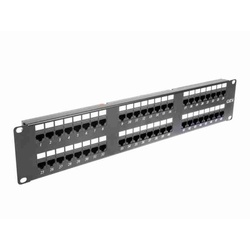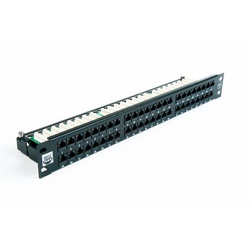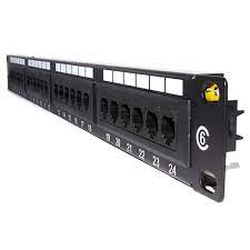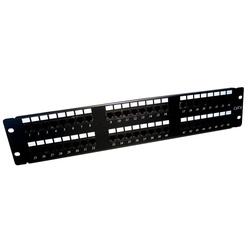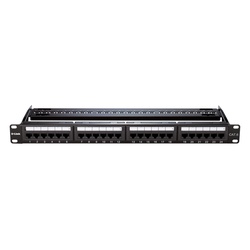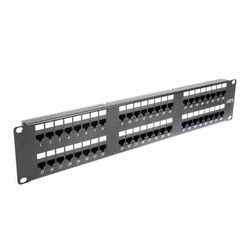
24-Port Cat6 APKR Patch Panel
The 24-port Cat6 APKR patch panel is a network infrastructure component used for organizing and terminating Cat6 Ethernet cables. It provides a central point for connecting multiple network devices, such as computers, servers, and switches, to a local area network (LAN) or wide area network (WAN).
- Port Capacity: The patch panel has 24 ports, allowing you to connect up to 24 Cat6 Ethernet cables.
- Cat6 Compatibility: It is specifically designed to support Cat6 cables, which are capable of transmitting data at speeds up to 10 gigabits per second (Gbps) over short distances.
- APKR Designation: APKR is not a standard term used in networking or cabling. It is possible that it refers to a specific brand, model, or variant of the patch panel. Without further information, it is difficult to provide specific details about the APKR designation.
- Patching Functionality: The patch panel acts as an intermediary between the network devices and the structured cabling system. Each port on the panel is connected to a corresponding port on a network device, such as a switch or router, using Ethernet patch cables. The opposite end of each patch cable is then terminated to the appropriate port on the panel.
- Cable Management: The patch panel provides a tidy and organized solution for managing network cables. It typically features numbered and labeled ports for easy identification and configuration. This helps streamline troubleshooting, maintenance, and future expansions or changes to the network.
| SKU | 1305 |
|---|
Reviews
This product does not have any reviews yet.
Add your reviewDescription
24-Port Cat6 APKR Patch Panel
A 24-port Cat6 APKR patch panel is a networking component used for organizing and connecting Cat6 Ethernet cables in a structured cabling system.
Features
-
Port Count: The patch panel has 24 ports, allowing you to connect up to 24 Cat6 cables.
-
Cat6 Compatibility: The patch panel is designed specifically for Cat6 cables, which are capable of transmitting data at speeds of up to 10 gigabits per second (Gbps) over short distances.
-
APKR Designation: "APKR" is not a standard term used in networking, so it's unclear what it refers to in this context. It's possible that it's a specific brand or model name, but without further information, it's challenging to provide specific details about this aspect.
-
Patch Panel Function: The main purpose of a patch panel is to provide a centralized point for terminating and managing network cables. It typically features RJ45 ports on the front side, where you can connect individual Cat6 cables. On the rear side, there are punch-down blocks or connectors where the cables' internal twisted pairs are terminated.
-
Cable Organization: The patch panel helps keep the cables organized and neatly arranged, reducing cable clutter and making it easier to identify and troubleshoot connections.
-
Flexibility and Scalability: By using a patch panel, you can easily reconfigure or reroute network connections without having to directly manipulate the cables. This adds flexibility to your network infrastructure and simplifies future expansions or modifications.
-
Rack-Mountable Design: The patch panel is typically designed to be mounted on a standard 19-inch equipment rack. It usually comes with mounting brackets or ears for secure installation.

